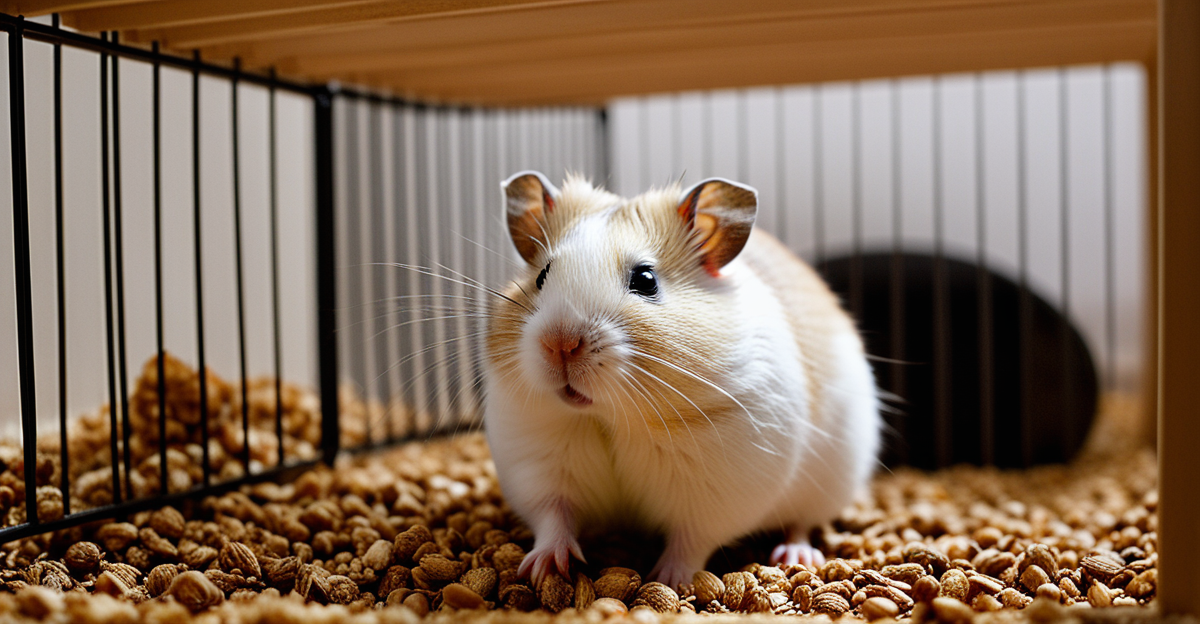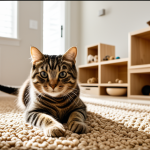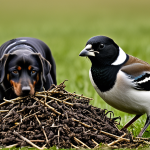Understanding Hamster Needs
When considering hamster care, it’s crucial to look into the specific habitat requirements of various hamster species. Each species, from the tiny Roborovski to the robust Syrian, demands unique living conditions. A misunderstanding here leads to issues in pet health. Not all hamsters thrive in the same environments; what’s ideal for one might not suit another.
Socialization and stimulation play a pivotal role in a hamster’s life. While Syrians are notably more solitary, dwarf species often relish companionship, provided they are introduced carefully. Ignoring these social needs can result in stress, which negatively impacts hamster care.
A découvrir également : Ultimate Enrichment Tips to Keep Your Pet Ferrets Happy and Boredom-Free
Common misconceptions about hamster care often stem from outdated practices and myths. Many assume minimal space suffices, but hamsters flourish in expansive habitats that mimic their natural environment. It’s crucial not to underestimate their need for habitat requirements and active engagement to ensure their well-being. Understanding these basics sets the foundation for a healthy, happy pet. Educating oneself on the current best practices alleviates unnecessary stress on the pet and can prolong its lifespan significantly.
Choosing the Right Enclosure
Selecting an appropriate hamster cage is vital for maintaining pet health. There are various types of enclosures available, including glass aquariums and wire cages. Glass aquariums offer controlled ventilation and visibility, but require sufficient airflow to prevent humidity build-up. In contrast, wire cages provide excellent ventilation but need secure spacing to prevent escapes.
Sujet a lire : Top Tips to Safeguard and Comfort Your Pet During UK Thunderstorms
When considering a habitat design, size standards depend on the hamster species. Popular hamster breeds in the UK, like Syrians, require a minimum of 80x50cm, while dwarf species might manage with less space, though bigger is always better. A spacious cage accommodates essential items such as wheels, houses, and toys, enhancing the hamster’s habitat design.
Ventilation and safety are paramount when choosing an enclosure. Ensure no gaps allow for accidental injuries or escapes, and choose rust-resistant materials to extend the cage’s lifespan. Further consideration of the hamster’s natural behavior, such as burrowing or climbing, assists in choosing an enclosure that promotes a happy, healthy life. By adhering to these considerations, pet owners enhance their hamster’s habitat design and overall well-being.
Optimal Bedding and Substrate Options
Choosing the right bedding materials is essential for hamster well-being. Safe options include paper-based bedding or aspen shavings, known for their comfort and absorbency. Paper-based materials are particularly soft and reduce dust, which benefits pet health. Avoid pine or cedar shavings as they can be harmful due to their strong oils and scents.
When evaluating substrate choices, consider both pros and cons. A natural, habitat-like environment is paramount, and substrates like coconut fibre can facilitate burrowing. While it is excellent for simulating a natural habitat, it can be messy. Conversely, paper-based substrates are cleaner and offer excellent odor control, though they may require more frequent replacement.
Depth of bedding significantly impacts your hamster’s life. A minimum of 15 cm allows for burrowing, an innate hamster behavior. Deeper bedding fosters healthier living conditions by providing an outlet for natural instincts while enhancing hamster care.
Effective odor management is essential for maintaining a fresh habitat. Regular cleaning and appropriate depth of substrate substantially reduce odor build-up. This promotes a pleasant environment both for your hamster and household by ensuring cleanliness and comfort.
Essential Toys and Enrichment Activities
Creating an engaging environment with hamster toys is crucial for both physical and mental stimulation. Providing a variety of enrichment ideas helps keep your hamster active and happy. Hamsters benefit from wheel-running, which satisfies their need for activity. Ensure that the running wheel is of appropriate size to prevent spinal issues, with a diameter of at least 20 cm for Syrians.
Incorporating DIY enrichment ideas can be cost-effective and fun. Creating tunnels and hideouts using paper rolls and cardboard boxes can simulate natural burrowing and nesting behaviours. Simple materials like these encourage exploration and mimic natural habitats, which is key to enrichment.
Seasons also offer unique activity recommendations. During warmer months, consider allowing your hamster supervised outdoor exploration in a secure, ventilated pen. This new environment introduces fresh stimuli, enhancing their sensory experience. Always ensure the pen is escape-proof and free from predators.
For a balanced routine, rotate toys regularly to maintain interest and provide continuous stimulation. Keeping enrichment fresh and varied supports both the hamster’s well-being and engagement in its habitat. By focusing on these elements, you create an enriching environment that promotes healthy development.
Climate Considerations for Hamsters in the UK
While small, hamsters are notably affected by their environment. The UK climate necessitates special attention to ensure a comfortable habitat. Maintaining consistent temperature control is crucial, as fluctuations can impact pet health. The ideal temperature for hamsters ranges from 18°C to 24°C. Anything outside this can cause stress or health issues.
Humidity also plays a significant role in their well-being. A consistent level between 40%-60% is recommended. Too high humidity may lead to respiratory problems, whereas too low can cause skin issues. Regular monitoring and adjustments, such as using a dehumidifier or humidifier, can aid in maintaining this balance.
Natural light exposure should be mitigated, as excessive sunlight can overheat the habitat. Position enclosures away from windows to prevent overheating hazards.
To further ensure habitat safety, avoid drafts and position cages away from open windows or doors. Common household hazards, like electrical cords or cleaning spray, should be well out of reach. By paying attention to these climate impact and habitat safety tips, you support a healthy and comfortable living environment for your pet.
Maintaining a Clean and Safe Habitat
Ensuring a hygienic environment is vital for effective habitat maintenance and overall pet safety. Creating a cleaning schedule is essential to keep a hamster’s space healthy. Start with their bedding; it should be replaced at least once a week. Meanwhile, spot cleaning daily helps manage pet waste and debris, preventing odour build-up.
When selecting cleaning supplies, it’s important to choose those that are safe and non-toxic. Consider mild soaps or specialised pet-safe cleaners. Avoid strong chemicals and scents that can harm the delicate respiratory systems of hamsters. Always rinse thoroughly after cleaning to eliminate residue.
Maintaining awareness of the habitat’s condition is crucial. Look out for signs of an unhealthy environment, such as strong odours, excessive moisture, or unusual hamster behaviour. These are indicators that immediate intervention is necessary. Regular checklist reviews help identify issues early on, ensuring your hamster’s home remains a sanctuary.
Incorporating clear, easy-to-follow cleaning schedules with safe products keeps hamsters stress-free and healthy. By understanding how to maintain a clean and nurturing space, you contribute to a happier, more vibrant pet life.
Visual Inspirations and Examples of Habitats
Understanding hamster care and creating ideal habitats becomes easier with visual guides. These examples showcase successful setups tailored to various species’ habitat requirements. For optimal pet health, a well-designed enclosure encourages natural behaviour and comfort.
Key elements in these examples include appropriate cage size, which differs by species. Syrian hamsters, for instance, benefit from larger areas, enhancing their environment. Displayed habitats often incorporate bespoke habitat examples, offering fresh visual guides. They highlight features such as expansive bedding for burrowing and tunnels that foster exploration.
Visual guides offer significant learning benefits. By observing successful setups through images and videos, owners readily grasp essential attributes, such as layout and enrichment. This clear depiction assists in planning and personalizing spaces according to individual needs.
For those looking to share or gain inspiration, photographing habitats is insightful. Tips include using natural light for clarity, ensuring key elements are visible, and capturing moments of active play. Sharing these habitat examples within communities cultivates creativity, encouraging further development and innovation in hamster care.










